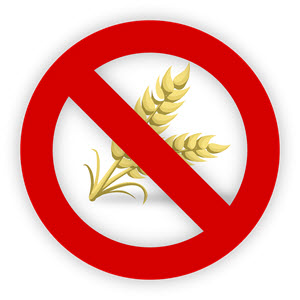Four Ways to Ensure Gluten Free Food is Gluten Free
Posted on 15th Jun 2018

A recent study by the New England Celiac Organization (NECO), found that many students with celiac disease would not recommend their college due to the fact that they found it hard to find genuinely gluten-free food on campus.
So that we are all on the same page, celiac disease is an intestinal disease that often causes abdominal pain, bloating, diarrhea, fatigue, even joint pain. It is often triggered by consuming food with gluten in it.
Some of the reasons why the students may be unable to find truly gluten-free food offerings on campus include:
Cross contamination. In this case, we are not talking about germs or bacteria, but gluten, which may be found on cooking utensils and cooking equipment. Food items intended to be gluten-free may become contaminated through utensils used in their preparation that have come in contact with gluten.
Untrained staff. Some food service workers in school cafeterias were not adequately trained as to what gluten is, the health risks it poses for those on a gluten-free diet, and how to ensure gluten does not find its way into food items directly or inadvertently.
No food analysis. Technologies or systems used to determine if gluten is in a food item served to students may be complicated or cumbersome to use, may not be available in the cafeteria or food service outlets preparing food, or simply may not be accurate or dependable.
This last point, as we will discuss later, is critical. In some cases, menus or labels on food items note they are “gluten-free” but later testing found that not to be the case.
So how can this be rectified? How can college campuses assure students with celiac disease that the gluten-free food they are eating is indeed free of gluten? By implementing the following suggestions, campus food service operations can offer truly gluten-free food options:
- Expert training. It is usually best to have a third-party training program. In some cases, this may involve bringing nutritionists into the school or food manufacturing facility. But very often this can be accomplished using training videos developed by food experts. These training videos should be designed to identify how severe celiac disease can be; to teach staff to recognize ingredients that may contain gluten; and to address other topics such as how to prevent cross contamination during food preparation.
- Savvy purchasing. An excellent way to ensure food items are gluten-free is by selecting ingredients labeled as such. However, this requires being very food savvy. For instance, oats are inherently gluten-free, but may become contaminated with gluten during harvesting, transport, or processing. Don’t assume a food item is gluten-free; check the label to be sure.
- Gluten-free for everyone. Some school chefs and nutritionists suggest that the easiest way to ensure food items are gluten-free is to serve gluten-free items to everyone. In some schools, those students asking for gluten-free food items feel singled out, requiring special treatment. Having everything gluten-free eliminates this problem.
- Select a recipe analysis system. Kitchen automation systems such as DayMark’s menu management system powered by Nutritics can quickly, easily, inexpensively, and dependably analyze recipes to ensure they are truly gluten-free. Some of these systems can perform a complete nutrition analysis of food items and also help food staff identify any of the FDA's eight major allergens as well as gluten.
Find out more about our menu management system by clicking here.


